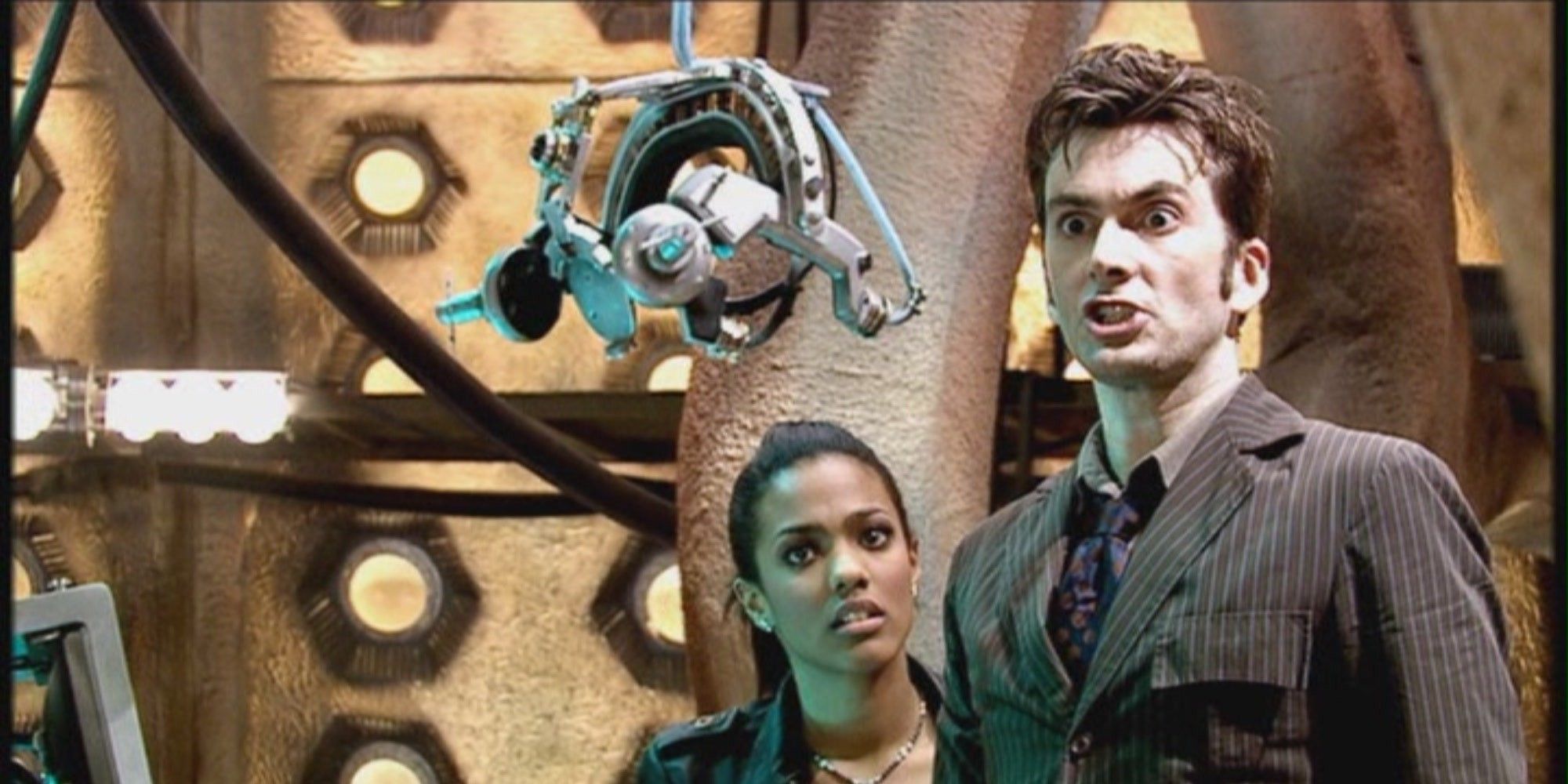Doctor Who Theory: The Time Lords Can Return As The Ultimate Villains

The Time Lords can return to Doctor Who — as the show’s ultimate villains. The Doctor has always had a tense relationship with the Time Lords of Gallifrey, even back when she believed she was one of them. Frustrated at the Time Lords’ policy of non-interference, the First Doctor left his supposed homeworld, resolving to do nothing but interfere. He became a Renegade, aware he would be punished by the Time Lords if they ever tracked him down.
The story of Gallifrey apparently came to an end in Doctor Who season 12. Gallifrey was destroyed by the Master, who was furious after he learned the secret of the Timeless Child. Even worse, he preserved the still-cooling bodies of the Time Lords, and then converted them into an army of Cybermen to serve his will. Gallifrey was left in ruins, the Citadel of the Time Lords reduced to rubble.
Showrunner Chris Chibnall has certainly gone to a great deal of effort to make viewers believe Gallifrey is gone for good. And yet, for all that’s the case, it wouldn’t be at all difficult for the Time Lords to return — and they could play a major role in Doctor Who season 13.
The Time Lords Could Return… Via The Chameleon Arch

The key to the Time Lords’ return lies in the Chameleon Arch. This technology was introduced in the David Tennant run; it completely drains the user of their memories and installs a pre-programmed persona into the host instead, while also altering their biology. Essentially, they can be used to allow a Time Lord to become part of another species, and even they don’t know who they really are.
But why did the Time Lords develop this technology? On the face of it, the idea is similar to the Chameleon Circuit that allows a TARDIS to blend in on another world, so a Time Lord can observe an alien civilization without changing it. In this case, however, the fundamental problem is what can be called the butterfly effect; the Time Lord who is concealed on a planet like this has absolutely no way to know how she will change the course of a planet’s development. They have introduced a new, random element, and they cannot possibly know whether their new persona will change anything significant. There is only one reason to develop the Chameleon Arch; it is to hide. Indeed, so far, the Chameleon Arch has been seen three times — and on each occasion, it was used for that purpose.
As masters of time and space, the Time Lords have the ability to use the Matrix to view both the present and future; that was established in “The Deadly Assassin,” and the scale of it all was confirmed in “The Trial of a Time Lord,” when they summoned a twisted future incarnation of the Doctor from the end of his lives. If they could look so far into the Doctor’s future, there’s no way they wouldn’t have seen the Time War — and Gallifrey’s destruction — coming. If they did, they would logically take steps to secure their future; and the Chameleon Arch gives them a way to do so. The Chameleon Arch allows Gallifrey to scatter Time Lords across time and space, on any world at any time, impossible to trace. These beings would survive the Time War, because nobody would be able to tell they existed; all it would take is for one of them to regain their true memories, and they could then travel through history awakening the rest of the refugees. The Time Lords would rise again.
The Time Lords Could Return… As Doctor Who’s Greatest Villains

As noted, the Doctor has never had the best relationship with the Time Lords. But he’s always considered them to be his own people, and for all he complains, there’s been a sense of grudging respect between the Doctor and the Time Lords. In “The Deadly Assassin,” he couldn’t just ignore a vision of the Lord President’s assassination, when the Master transmitted it into his mind through the Matrix; in “The Day of the Doctor,” he went to incredible lengths to save his apparent homeworld, and took joy when he learned “Gallifrey Falls No More.” The Time Lords, for their part, have sometimes viewed the Doctor as a useful tool — and sometimes as a potential threat, when he stumbled on secrets they’d rather be kept quiet.
But the entire dynamic has changed now. As a result of the Timeless Child retcon, the Doctor knows she is not a Time Lord at all, but rather originates from another realm — possibly even an entirely distant universe. In fact, the Time Lords derived all their power by conducting years’ worth of experiments upon her, sacrificing countless of her regenerations as they attempted to unlock the secret of immortality. There’s a new sense of emotional distance between the Doctor and the Time Lords, and that allows a reborn Gallifrey to take on a very different role. Now, they can become outright villains. Imagine if a resurgent Gallifrey no longer followed the doctrine of non-intervention. The Doctor would watch them with a degree of caution, wary lest they abuse their power — and, in truth, she is now well aware the Time Lords have never been the most moral, so such an abuse is inevitable.
This may have already been set up. Doctor Who season 12 introduced a never-before-seen incarnation of the Doctor, played by Jo Martin, on the run from the Time Lords. Most viewers have assumed Martin’s Doctor originates from the past, and thus is a pre-Hartnell Doctor; however, some of the details don’t quite match up. It’s entirely possible Jo Martin is the next Doctor, and if so the Time Lords are indeed destined to return as a galactic power. Notice the Judoon are acting as their police force, suggesting the Time Lords may have even overthrown the Shadow Proclamation as a galactic authority. What’s more, should the Doctor figure out what is happening, she is actually forewarned — and that may mean she is forearmed for Doctor Who season 13.
About The Author


















